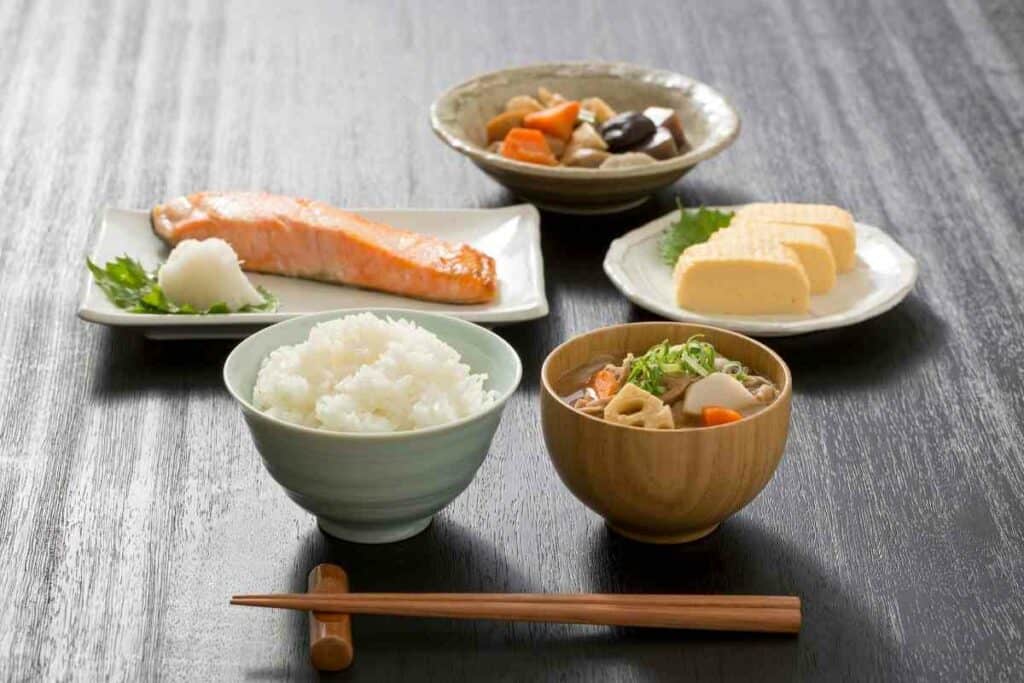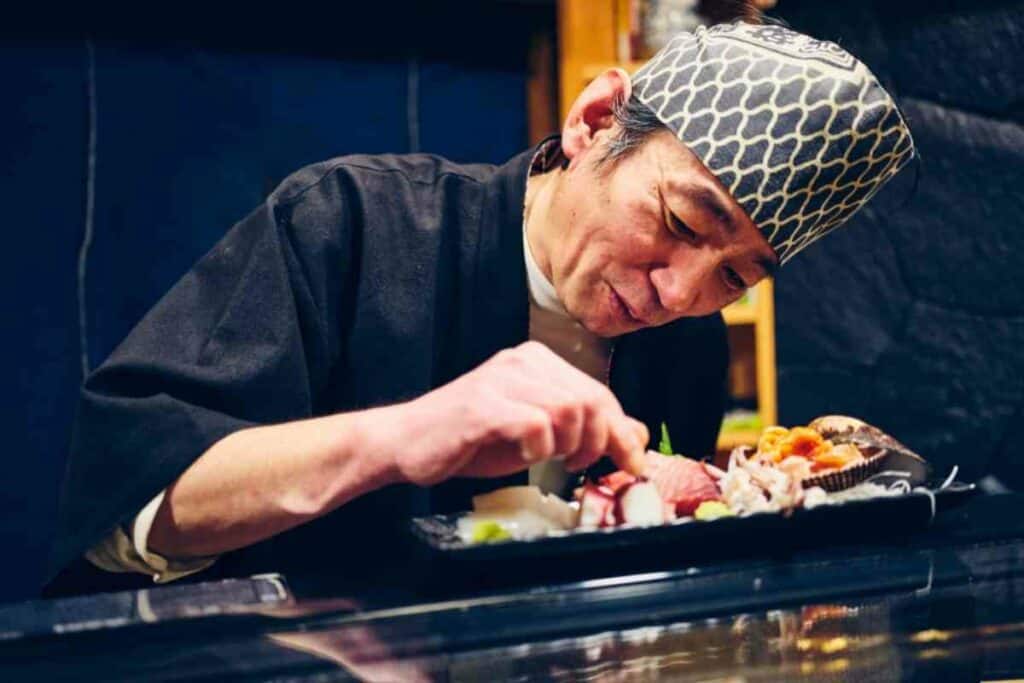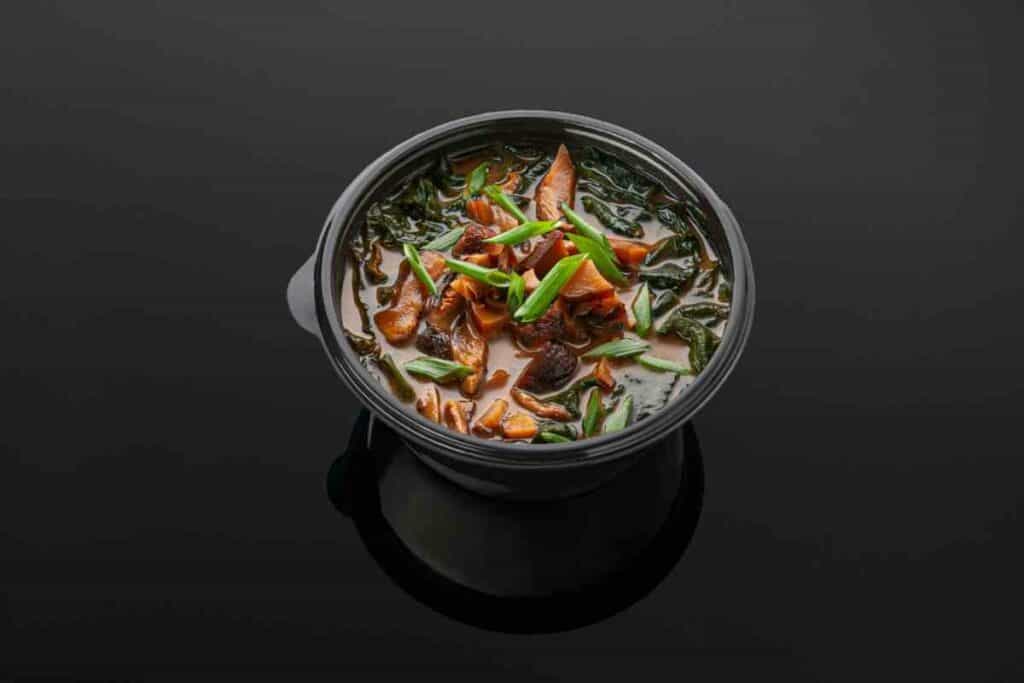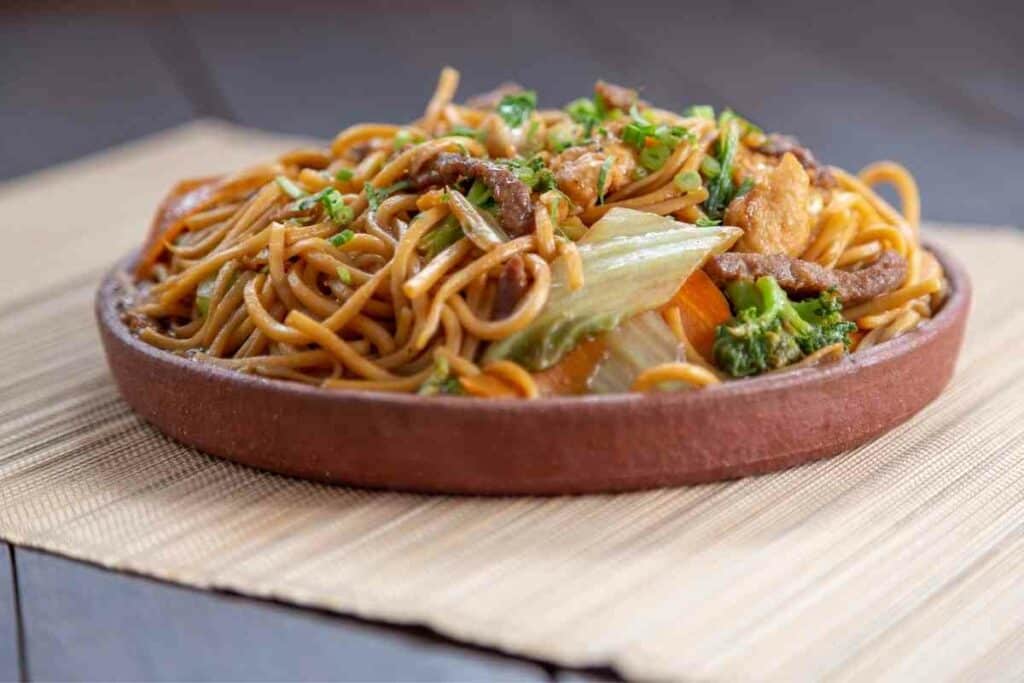Japan is well-known for its rich history and diverse cuisine. However, due to the link between diet and some lifestyle diseases, more people watch what they eat, especially foreign delicacies.
One of the minerals under the scope is sodium.
Too many sodium-rich diets increase the risk of high blood pressure and heart disease.

This is because most of the sodium consumed by people comes from salt and processed foods; the saltier the food, the higher your sodium intake.
So is Japanese food high in sodium? Yes, Japanese foods contain a lot of sodium but they aren’t always salty.
In Japan – The diet primarily consists of fish and vegetables with low sodium and high protein content. Conversely, most people in the west eat processed meats with high sodium content. Nonetheless, salt is an essential part of Japanese culture and cuisine.
Table of Contents
What’s the significance of salt in japan?
Japanese people have a different perspective on salt than the rest of the world.
While most people see salt as a risk factor for hypertension and cardiovascular problems, citizens of the Land of the Rising Sun consider salt sacred and an integral part of their daily lives.
In Japan, salt is the defining flavour for most local dishes.

However, its use isn’t limited to seasoning – it’s useful in preparing and cooking most dishes, namely fish and pickled veggies.
Besides, Japanese chefs also use salt to:
- drain water from wilting vegetables
- extract water from condensing fish
- enhance coagulation in grilled meat and fish
- and soak peeled apples to prevent browning
The extensive use of salt means Japanese foods have an actual sodium content.
However, this doesn’t mean the foods are unhealthy.
How?
Besides the meats and veggies, Japanese cuisines include seafood, soy, rice, green teas, and miso soup, which counter the adverse effects of salt’s sodium.
A testament to the benefits of Japanese cuisine is the country’s life expectancy which is the highest in the world.
Despite the high drug abuse, pollution, and stress levels, most people in Japan live beyond their 75th birthday because of eating healthily.
What makes Japanese food healthy?
As mentioned above, Japan has the world’s highest life expectancy because of its healthy cuisine.
Of course, salt is a significant component of local effects, but other ingredients usually counter its adverse effects:
- First, Japanese dishes include a wide variety of legumes and vegetables, including seaweed. These foods have low caloric and sodium content and high in fiber.
- Secondly, seafood is integral to Japanese culture. It’s healthier than processed meat, containing omega-3 and other valuable nutrients.
However, most species are going extinct, and pollution means that some have mercury.

Also, Japanese food features lots of fermented products. These are vital to the reproduction of beneficial bacteria that promote gut health.
Examples include miso, rice malt, and salt-cured rice malt.
If you like strong drinks, you can use mirin and sake, the two most famous fermented alcoholic beverages in Japan.
How much sodium do you need?
Your body needs sodium to function properly.
Nevertheless, excessive sodium intake can hurt your health. The same applies to taking too little sodium.

The recommended daily sodium intake is 1,500 milligrams. However, most people take more than 3,000 milligrams daily.
So, what are the effects?
Symptoms of sodium deficiency
When you take too little sodium, you experience hyponatremia.
Sodium is an electrolyte that regulates water content in and around your cell.
Hyponatremia occurs when you drink too much water that dilutes sodium. This results in swelling, whose effects can range from mild to potentially deadly.
Depending on the severity, the doctor might recommend reducing water intake or intravenous electrolyte injection to curb hyponatremia.
Common signs of sodium deficiency include:
- confusion
- headaches
- lethargy
- nausea
- and vomiting
If left untreated, it causes seizures and comas.
Symptoms of excess sodium intake
The most common short-term effect of sodium over consumption is bloating.

This is because salt helps your body to retain more water, resulting in fluid build-up.
Another symptom of excess sodium is thirstiness.
Salt absorbs too much water from your bloodstream, forcing you to take more to compensate for the deficit.
Fortunately, you can quench your thirst by drinking water.
Heads Up! In the long term, sodium increases the risk of hypertension, heart disease, osteoporosis, gastric cancers, and cerebrovascular accidents.
Wrapping Up
Although Japanese food isn’t necessarily salty, it contains a substantial amount of sodium. Salt makes foods tastier, but it’s harmful when consumed in excess.
The best thing about Japanese cuisine is its elements that counter sodium’s adverse effects.
For example, vegetables and seaweed have high fiber and protein content that counters the harm caused by excessive sodium consumption.
That said, sodium consumption depends on your habits. Experts recommend taking not more than a teaspoon of salt daily.
While this isn’t practical for most people, you can mitigate the potential effects by eating lots of fruits and veggies to counter the effects of sodium.
- Japanese Traditional Sweets (Wagashi): A Guide to Their Origins and Varieties
- A Taste of Japan in Every Bite – Japanese Candy & Snack Box Review
- Bubble Tea vs Boba Compared: What’s the Difference?
- Best Izakaya Foods for a Relaxed Night Out (My Top 10 Picks)
- Edo Kiriko Whiskey Glasses (Japanese Heritage in Every Pour)
- Japanese Viral Foods on Social Media (Discover the Top 10)









